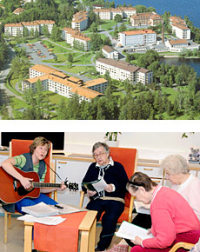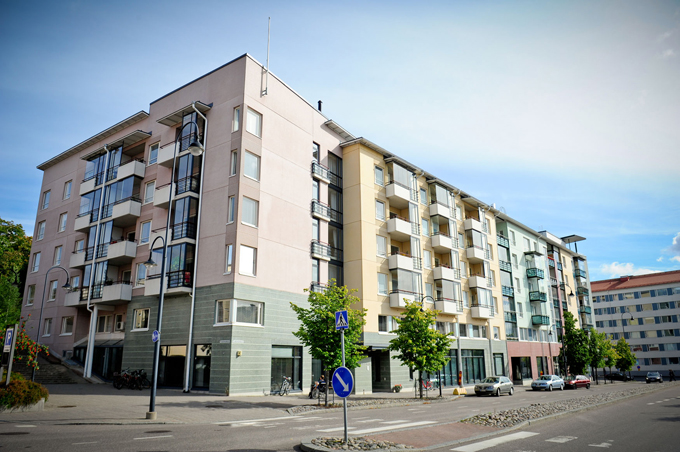In Finland, when you enter residential care you are renting an apartment. It’s your home – there just happen to be services, such as food and nursing care, attached. Staff don’t enter your home without knocking. The fee for services depends on how much you need and your income. The rent depends on the size of the apartment. In both cases, help is available to pay for these services depending on your income. If you can’t pay at all, the municipality pays for you.
Residential care facilities include those run by the municipality as well as private facilities that have apartments that residents pay for out-of-pocket and apartments purchased by the municipality. The size and quality of facilities can vary. Some of them can be quite large and feel more like a hospital with a nurses’ station and long, sterile hallways. Others are smaller and feel more homelike. These tend to have a cozy common area and staff are less separated from the residents. Some large facilities are divided into smaller units that mimic this more homelike atmosphere. There are very few facilities left analogous to what we think of us nursing homes in the United States. Even places where the residents need a substantial amount of care are more likely to be structured into smaller units and the underlying philosophy is that this is the residents’ home and should be treated as such. Many places have courtyards or other outdoor areas and some of these include small gardens where residents can pick berries or dig up potatoes. All have saunas available for residents to use. These are important for quality of life as regular saunas and outdoor activities are important parts of Finnish culture.
There is a formal process for entering residential care. It begins with a referral from the municipal social worker or perhaps the family. Typically there is a waiting list. By legislation the wait for residential care should be less than three months, however, there is currently a longer wait in many places. Once you are on the waiting list, you are given a place in the next facility that has an opening as long as it is suitable for your needs. You can decline it if it is not where you want to be, but then you go back onto the waiting list. The municipal social worker manages the waiting list and can move you up in line if your situation changes. Of course, if you can afford it, you can pay out-of-pocket for an apartment in the facility of your choice and the wait may be shorter.
The criteria are high just to get into the queue. The social worker visits the home and does a complete biopsychosocial assessment. This assessment is then reviewed by an interdisciplinary group made up of a doctor, physiotherapist, nurse, hospital social worker, and a social worker from community care. They decide whether or not you are accepted into the queue. This group meets once a week. Sometimes they require additional evaluation before they will make a decision. It is a very time consuming and bureaucratic process that can be difficult for the older adults and their relatives.
How does this compare to your experience or knowledge of residential care for older adults in the United States?



Leave a Reply